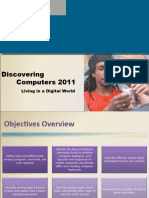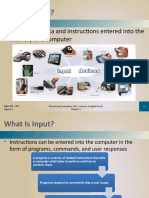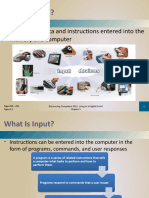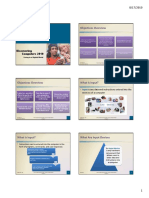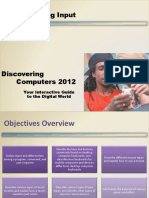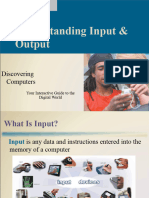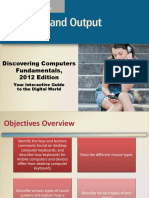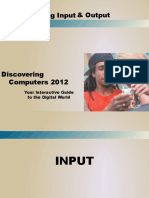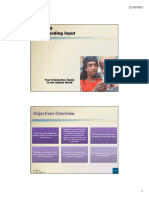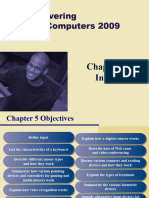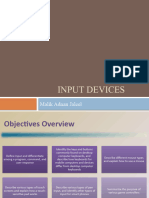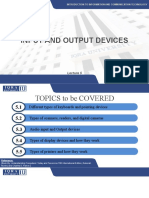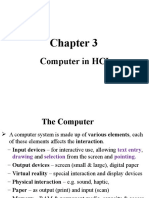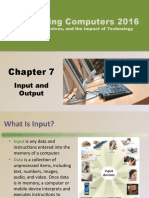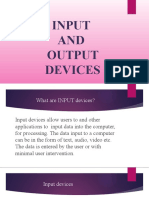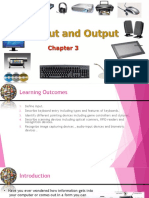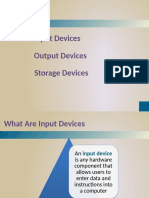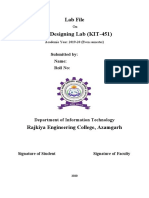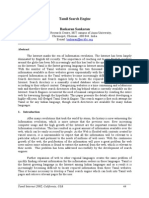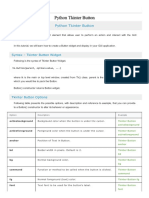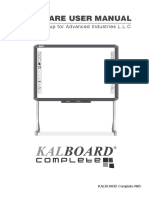100% found this document useful (1 vote)
64 views52 pagesChapter 05 Input
This document discusses various input devices for computers. It describes keyboards, pointing devices like mice and touchpads, touch screens, digital cameras, microphones, scanners, and other tools used to enter data, instructions, and media into computers. The document provides examples of each type of input device and how they are used.
Uploaded by
rifaiCopyright
© © All Rights Reserved
We take content rights seriously. If you suspect this is your content, claim it here.
Available Formats
Download as PPT, PDF, TXT or read online on Scribd
100% found this document useful (1 vote)
64 views52 pagesChapter 05 Input
This document discusses various input devices for computers. It describes keyboards, pointing devices like mice and touchpads, touch screens, digital cameras, microphones, scanners, and other tools used to enter data, instructions, and media into computers. The document provides examples of each type of input device and how they are used.
Uploaded by
rifaiCopyright
© © All Rights Reserved
We take content rights seriously. If you suspect this is your content, claim it here.
Available Formats
Download as PPT, PDF, TXT or read online on Scribd
/ 52

